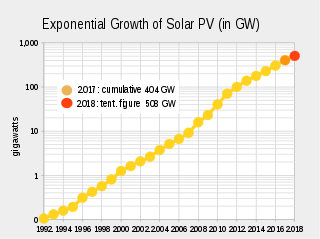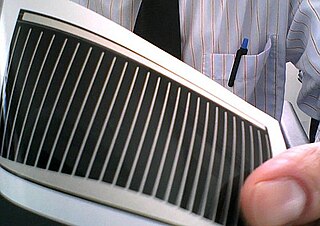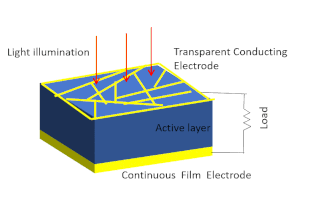| Type | Private |
|---|---|
| Industry | Solar Energy |
| Founded | 24 March 1985 |
| Founder | Dr. Vijay K. Kapur Dr. Bulent M. Basol Mr. Eric Tseng |
| Defunct | 2016 [1] |
| Headquarters | , |
Key people | Vijay K. Kapur (CEO) Richard Kemmerle |
| Products | Solar panels |
| Website | isetinc.com |
International Solar Electric Technology, or ISET, was a company invested in copper indium gallium selenide (CIGS) photovoltaics. ISET's research [2] over two decades had been largely funded by grants from the National Renewable Energy Laboratory. Members helped found or worked in many of the more well known CIGS companies, such as Nanosolar, Solopower, Showa, and Honda Soltec [3] Despite a lack of venture capital, ISET planned to launch a thin film, produced in a new Chatsworth plant with hundreds of megawatts per year capacity after the pilot plant is proven. The company believed they will be able to at first achieve 10% efficient modules sold for $0.65 per watt, then 15% efficient for $0.50 per watt, and potentially ultimately as low as $0.40 per watt (a tenth of current prices). [4]

Photovoltaics (PV) is the conversion of light into electricity using semiconducting materials that exhibit the photovoltaic effect, a phenomenon studied in physics, photochemistry, and electrochemistry. The photovoltaic effect is commercially utilized for electricity generation and as photosensors. The power system is controlled using power electronics.
In the 19th century, it was observed that the sunlight striking certain materials generates detectable electric current - the photoelectric effect. This discovery laid the foundation for solar cells. Solar cells have gone on to be used in many applications. They have historically been used in situations where electrical power from the grid was unavailable.

A solar cell, or photovoltaic cell, is an electronic device that converts the energy of light directly into electricity by the photovoltaic effect, which is a physical and chemical phenomenon. It is a form of photoelectric cell, defined as a device whose electrical characteristics, such as current, voltage, or resistance, vary when exposed to light. Individual solar cell devices are often the electrical building blocks of photovoltaic modules, known colloquially as solar panels. The common single junction silicon solar cell can produce a maximum open-circuit voltage of approximately 0.5 volts to 0.6 volts.
Nanosolar was a developer of solar power technology. Based in San Jose, CA, Nanosolar developed and briefly commercialized a low-cost printable solar cell manufacturing process. The company started selling thin-film CIGS panels mid-December 2007, and planned to sell them at 99 cents per watt, much below the market at the time. However, prices for solar panels made of crystalline silicon declined significantly during the following years, reducing most of Nanosolar's cost advantage. By February 2013 Nanosolar had laid off 75% of its work force. Nanosolar began auctioning off its equipment in August 2013. Co-Founder of Nanosolar Martin Roscheisen stated on his personal blog that nanosolar "ultimately failed commercially." and that he would not enter this industry again because of slow-development cycle, complex production problems and the impact of cheap Chinese solar power production. Nanosolar ultimately produced less than 50 MW of solar power capacity despite having raised more than $400 million in investment.

Solar shingles, also called photovoltaic shingles, are solar panels designed to look like and function as conventional roofing materials, such as asphalt shingle or slate, while also producing electricity. Solar shingles are a type of solar energy solution known as building-integrated photovoltaics (BIPV).

Building-integrated photovoltaics (BIPV) are photovoltaic materials that are used to replace conventional building materials in parts of the building envelope such as the roof, skylights, or facades. They are increasingly being incorporated into the construction of new buildings as a principal or ancillary source of electrical power, although existing buildings may be retrofitted with similar technology. The advantage of integrated photovoltaics over more common non-integrated systems is that the initial cost can be offset by reducing the amount spent on building materials and labor that would normally be used to construct the part of the building that the BIPV modules replace. In addition, BIPV allows for more widespread solar adoption when the building's aesthetics matter and traditional rack-mounted solar panels would disrupt the intended look of the building.

First Solar, Inc. is an American manufacturer of solar panels, and a provider of utility-scale PV power plants and supporting services that include finance, construction, maintenance and end-of-life panel recycling. First Solar uses rigid thin-film modules for its solar panels, and produces CdTe panels using cadmium telluride (CdTe) as a semiconductor. The company was founded in 1990 by inventor Harold McMaster as Solar Cells, Inc. and the Florida Corporation in 1993 with JD Polk. In 1999 it was purchased by True North Partners, LLC, who rebranded it as First Solar, Inc.
MiaSolé is an American solar energy company selling copper indium gallium selenide (CIGS) thin-film photovoltaic products. MiaSolé's manufacturing process lays CIGS on a flexible stainless steel substrate. MiaSolé produces all layers of photovoltaic material in a continuous sputtering process.

A photovoltaic system, also PV system or solar power system, is an electric power system designed to supply usable solar power by means of photovoltaics. It consists of an arrangement of several components, including solar panels to absorb and convert sunlight into electricity, a solar inverter to convert the output from direct to alternating current, as well as mounting, cabling, and other electrical accessories to set up a working system. It may also use a solar tracking system to improve the system's overall performance and include an integrated battery.
Global Solar Energy is a US-based manufacturer of CIGS solar cells, a thin-film based photovoltaic technology, with manufacturing operations in Tucson, Arizona, United States, and Berlin, Germany. In 2013, it was bought by Chinese renewable energy company Hanergy.

Ascent Solar Technologies, Inc. is a publicly traded photovoltaic (PV) company located in Thornton, Colorado. Its primary product is a flexible CIGS solar cell on a plastic substrate.

Cadmium telluride (CdTe) photovoltaics is a photovoltaic (PV) technology based on the use of cadmium telluride in a thin semiconductor layer designed to absorb and convert sunlight into electricity. Cadmium telluride PV is the only thin film technology with lower costs than conventional solar cells made of crystalline silicon in multi-kilowatt systems.

A thin-film solar cell is a second generation solar cell that is made by depositing one or more thin layers, or thin film (TF) of photovoltaic material on a substrate, such as glass, plastic or metal. Thin-film solar cells are commercially used in several technologies, including cadmium telluride (CdTe), copper indium gallium diselenide (CIGS), and amorphous thin-film silicon.

Worldwide growth of photovoltaics has been close to exponential between 1992 and 2018. During this period of time, photovoltaics (PV), also known as solar PV, evolved from a niche market of small-scale applications to a mainstream electricity source.

A copper indium gallium selenide solar cell is a thin-film solar cell used to convert sunlight into electric power. It is manufactured by depositing a thin layer of copper indium gallium selenide solution on glass or plastic backing, along with electrodes on the front and back to collect current. Because the material has a high absorption coefficient and strongly absorbs sunlight, a much thinner film is required than of other semiconductor materials.

Solar cell efficiency refers to the portion of energy in the form of sunlight that can be converted via photovoltaics into electricity by the solar cell.
Solar Frontier Kabushiki Kaisha is a Japanese photovoltaic company that develops and manufactures thin film solar cells using CIGS technology. It is a fully owned subsidiary of Showa Shell Sekiyu and located in Minato, Tokyo, Japan. The company was founded in 2006 as Showa Shell Solar, and renamed Solar Frontier in April 2010.
Hanergy Holding Group Ltd. (Hanergy) is a Chinese multinational company headquartered in Beijing. The company is focusing on thin-film solar value chain, including manufacturing and solar parks development. It also owns the Jinanqiao Hydroelectric Power Station and two wind farms.